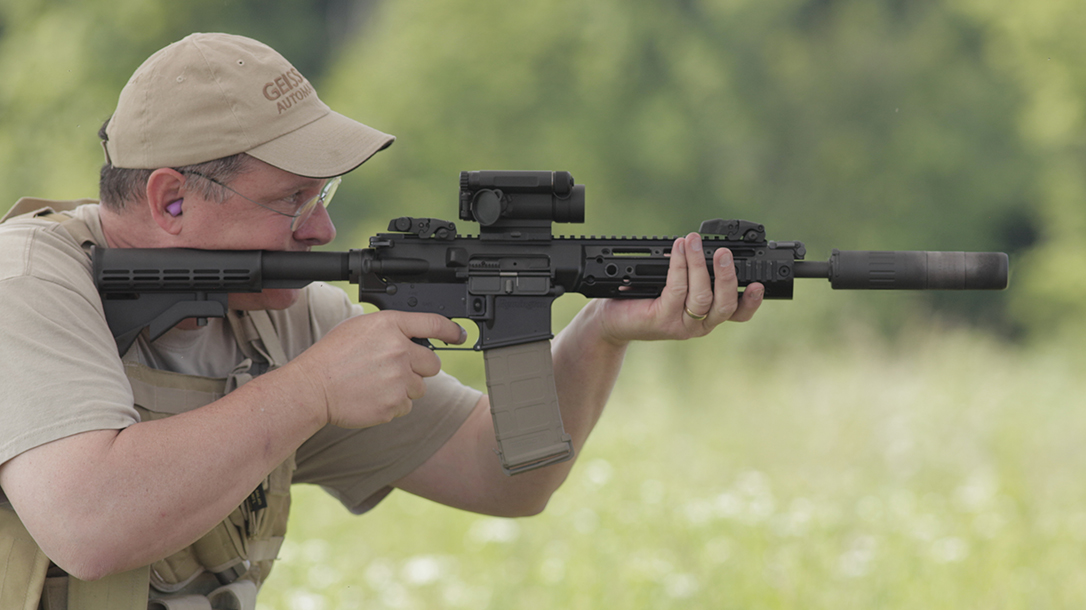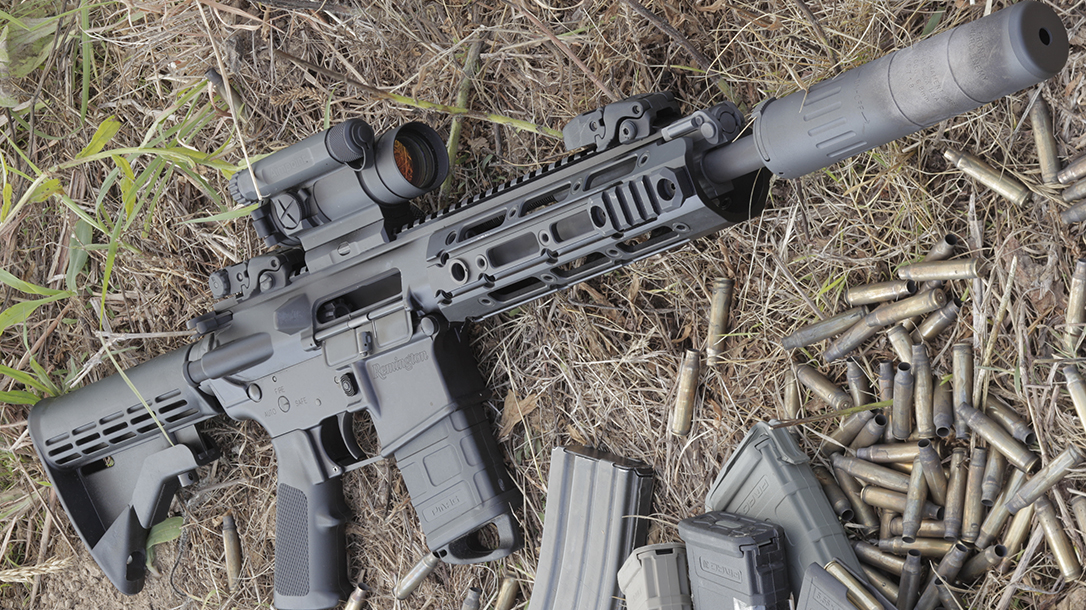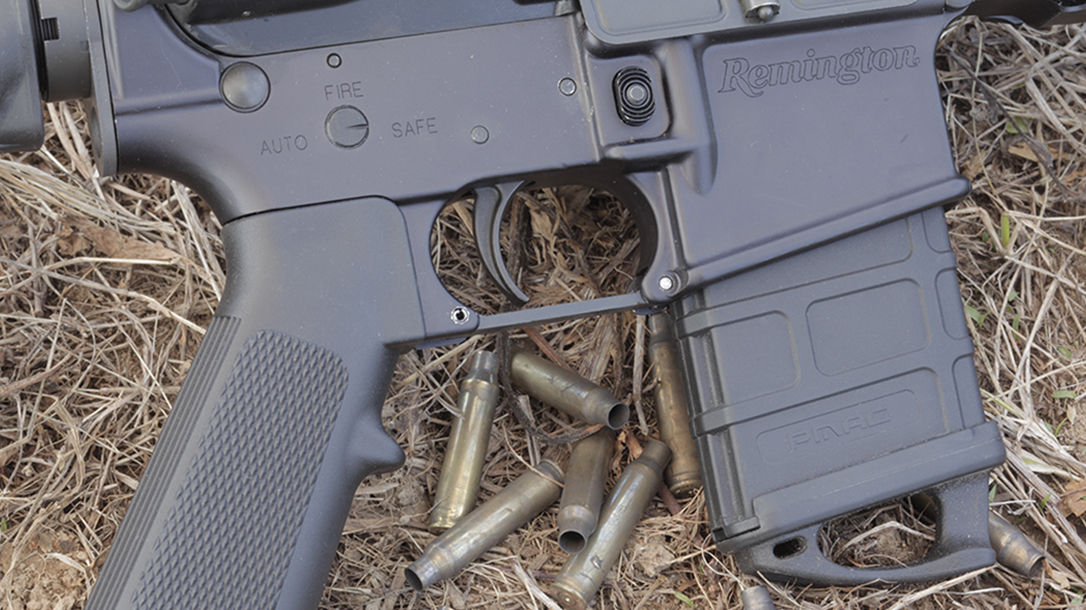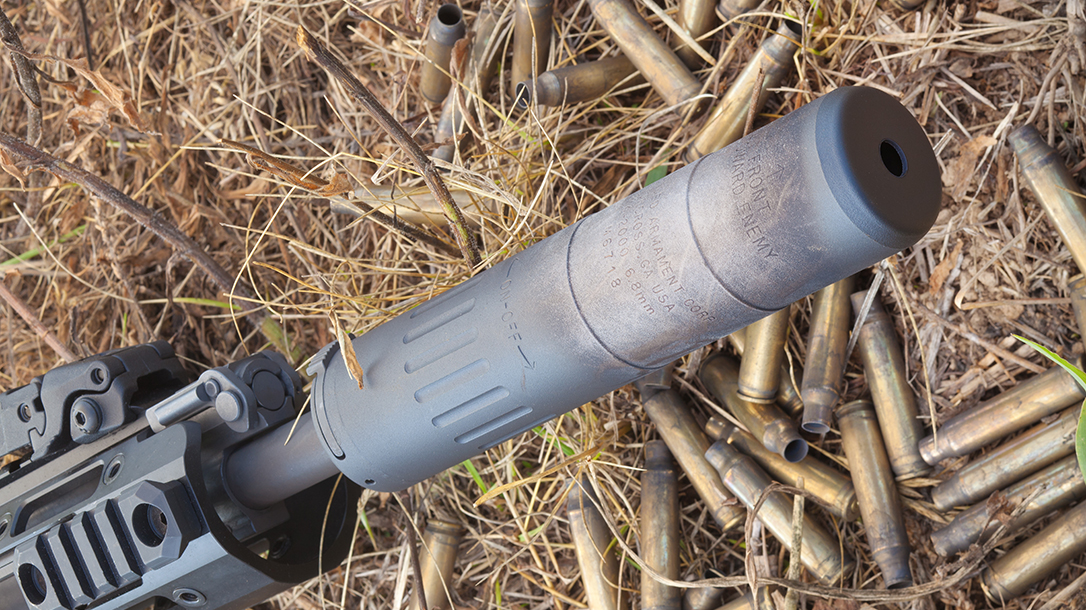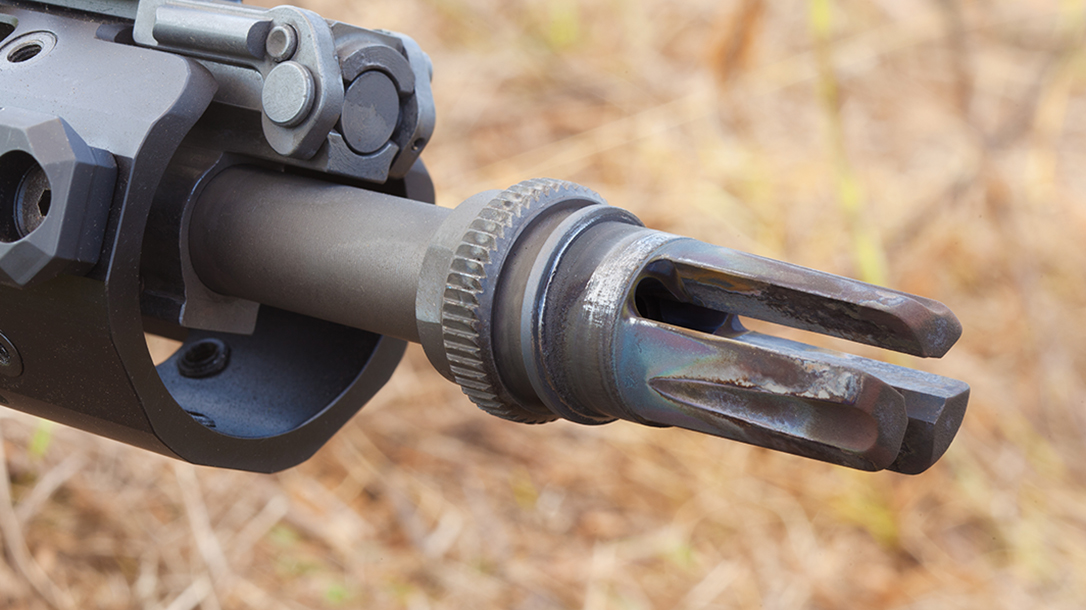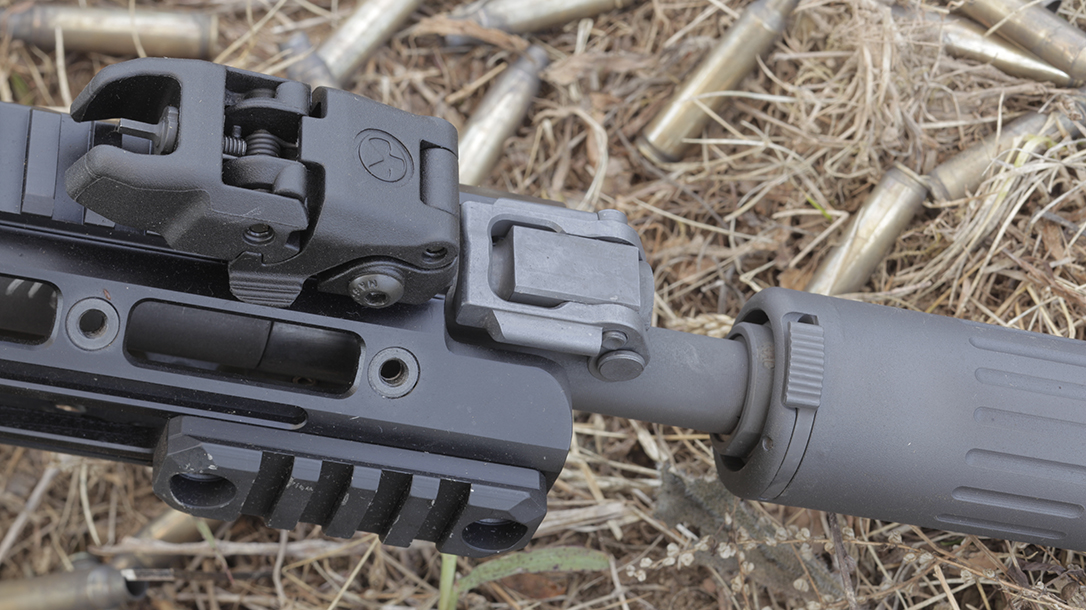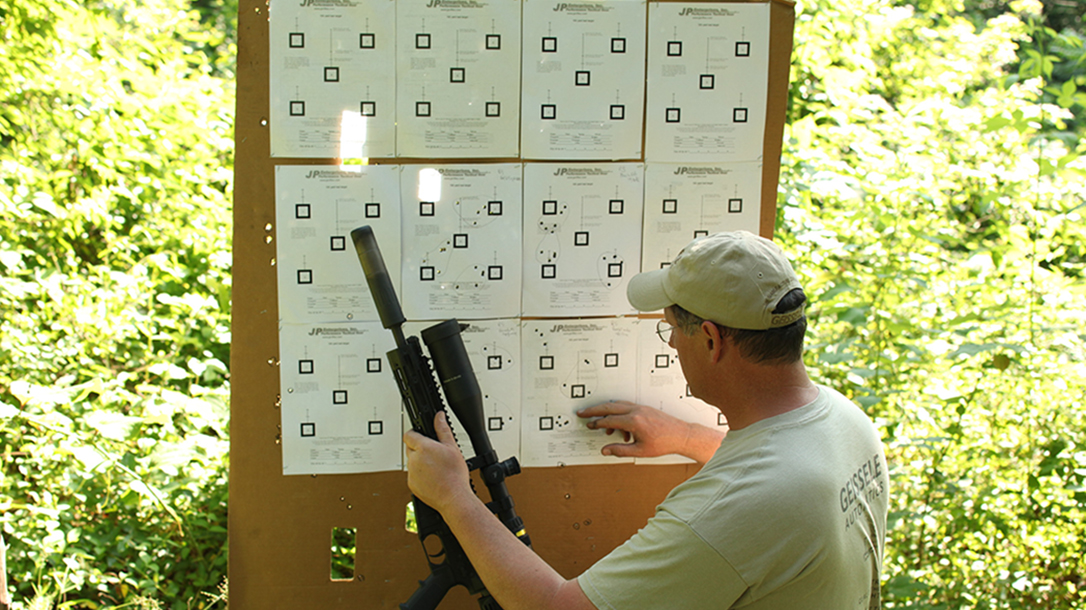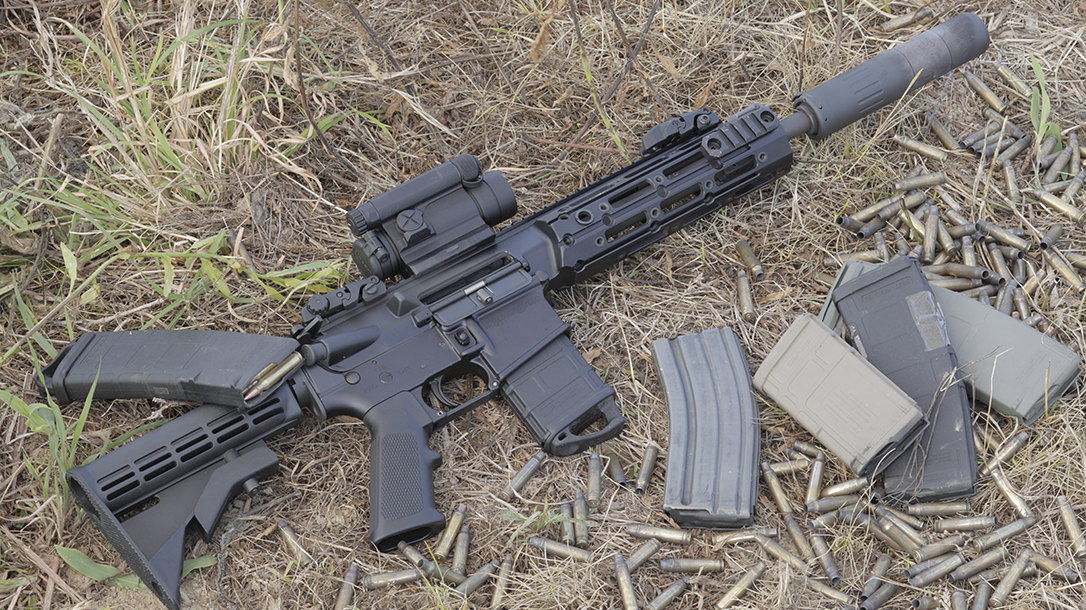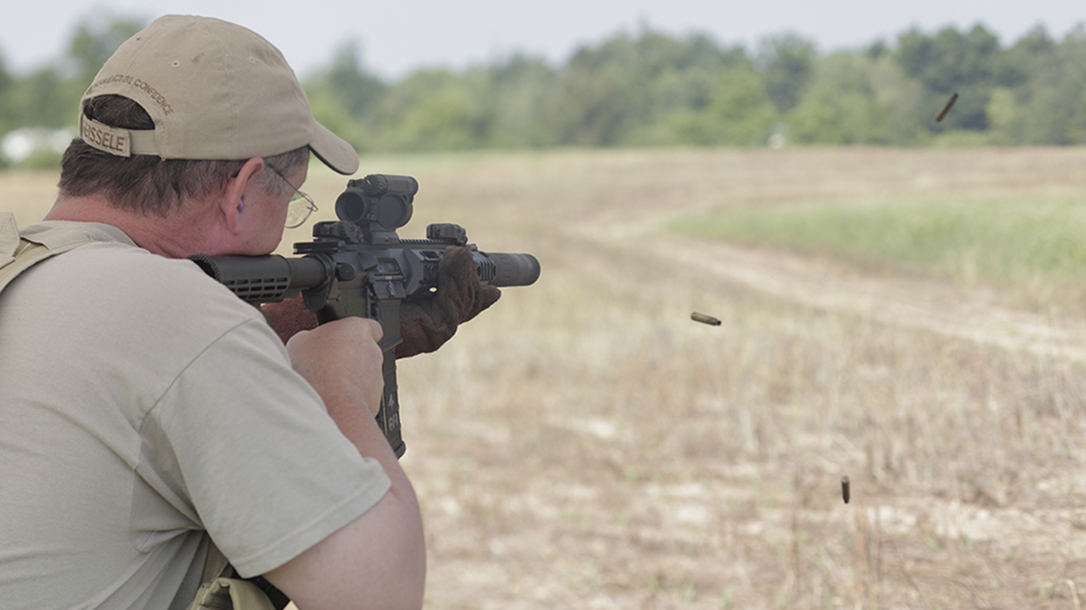Little more than a week had passed after the First Battle of Bull Run in 1861 when Eliphalet Remington signed a contract to produce 10,000 Model 1861 rifles in support of Union troops. But Remington’s massive factory conversion from peacetime sporting arms to military weapons proved too stressful for the elderly gun-maker. He died a few days later, and his sons then took over the company. Taking advantage of the extensive machinery used in the production of the Model 1841 Mississippi Rifle and the Model 1855 rifle, the brothers proposed a number of changes to speed up manufacturing that were so vast that a new contract was signed on August 11, 1862, for the production of what would later be termed “Zouave” rifles. These new rifles cost the U.S. government $17 each, a cost that bears little resemblance to Big Green’s most recent U.S. military contract.
Remington, a member of the Freedom Group family of companies, announced on April 20, 2012, the award of an indefinite-delivery/indefinite-quantity contract for the procurement of a maximum of 120,000 M4/M4A1 Carbines by the U.S. Army Contracting Command. When Eliphalet Remington passes Samuel Colt on that street where all old gun-makers go, he likely won’t be able to suppress a prideful smirk. The massive military contract award for M4 Carbines is ironic too, given that Remington has invested so heavily in the Remington Gas Piston (RGP) AR configuration. Not too long ago, I was able to test Remington’s newest version of the RGP, the R5.
Advertisement — Continue Reading Below
Compared to direct-impingement rifles like the standard M4, piston-driven rifles are typically easier to clean and maintain in the field since they don’t get as dirty inside, nor do they run as hot, thus requiring less lubrication and maintenance. “With a gas gun, you can go a thousand rounds without cleaning it,” Tim Mulverhill, a former Army Ranger and AR piston system expert, noted. “Piston guns don’t suffer from heat fatigue or as severe a heating and cooling cycle. If you run eight magazines through a gas gun, the bolt and other parts climb to 800 degrees. But a piston gun, you can do the same thing and take the bolt out, and it’s barely warm.”
Remington learned from its own experiences with the RGP and from issues found in other manufacturers’ piston-driven designs. The R5 RGP benefits from a host of improvements, including a dependable one-piece upper receiver and handguard, and it is capable of sub-MOA accuracy.
Tank-Tough AR
The R5 RGP is available as a standalone carbine or as a complete upper that’s ready to install on an M4-style lower. This weapon represents the next leap forward in the evolution of modern combat rifles.
Advertisement — Continue Reading Below
Featuring a monolithic upper with a free-floating handguard, a robust gas piston operating system and tool-less disassembly for cleaning, the R5 RGP is designed for rugged, accurate service in the most extreme conditions. The carbine is available with either a 10.5- or 14.5-inch barrel that is cold-hammer forged with a 1-in-7-inch twist rate to stabilize the heaviest military 5.56mm NATO rounds. The barrel has also been given a ferritic-nitrocarburized finish to increase resistance to wear. The AAC Blackout flash suppressor allows for the quick attachment of an AAC sound suppressor.
The 10.5-inch-barreled version weighs 6.56 pounds unloaded, while the 14.5-inch-barreled model weighs 6.95 pounds. Though production models come with Magpul CTR stocks, I tested early models with collapsible, mil-spec buttstocks. The lower receiver is the same lower used on Remington’s R4. My test models also came with select-fire control groups, though civilian models are obviously semi-auto only.
Since Remington Defense has the versatility to customize many of its weapons to a customer’s needs, there are also options for stocks, sights and grips. The weapons I tested carried A2-style pistol grips and Magpul MBUS front and rear sights.
Advertisement — Continue Reading Below
Additional Details
According to Robbie Johnson, a former Special Forces sniper who now works for Remington Defense and competes in 3-Gun matches, the R5 RGP was designed to “compete with the SIG516. And we’ve done a lot more to the R5 than just taking an M4 and putting a piston system on it. The R5’s upper receiver and handguard is a monolithic system. This gas piston operating system disassembles in seconds without tools—just pop the pin out. All of the gas seals are in the gas block. It has 15 gas seals to keep it operating. It can run with as few as three seals, and it’s a self-cleaning piston. This weapon is made to run with or without a suppressor, without the need for a regulator.”
Remington’s engineers also re-designed the R5 RGP’s bolt. It has no gas rings. “We eliminated the carrier tilt problems with the new operating rod,” Johnson said. “The bolt is made a lot harder with a nickel-boron treatment. It has a one-piece bolt carrier, too, that’s Melonite-coated. One thing we have done at the rear is radius the back of the bolt, to reduce wear in the upper receiver when you get carrier tilt. We also adjusted the weight of the bolt for increased velocity in the middle of the operating range so it will run either dirty or lubed up.”
Johnson continued, “Flush-cup sling attachment points were made stronger on the R5, so a sling swivel will fail before the flush cup will pull out. Time serts were also made stronger than the rail mount screws. If it is over-tightened, the screw will shear off before the sert will pull out. The rail has channels for cable routing, too.”
Advertisement — Continue Reading Below
First Hits
My first experience with the R5 RGP was during a writers’ event held at Gunsite Academy. I ran through five 30-round magazines but was limited to off-hand shooting at 25 yards. It was basically a familiarization and function testing opportunity. A month later, Remington’s Robin Eaves brought his R5 RGP sales sample to my range for a day of shooting. Since the gun was fitted with an AAC Blackout muzzle brake, we screwed on an AAC M4 2000 suppressor for testing. Even though the suppressor was sized to fit a 6.8 SPC bore, it performed just as well on the 5.56mm carbine.
Carbine Testing
My son, Luke, and I ran more than 250 rounds through the 10.5-inch-barreled R5 RGP over 10 minutes. After letting the carbine cool, we moved to the 100-yard range to ascertain the weapon’s accuracy potential. I mounted a Trijicon 5-20x50mm AccuPoint on the R5 to get the most from the carbine and each of the three loads chosen. An Oehler 35P chronograph gathered velocity data.
Advertisement — Continue Reading Below
Our first test load was Black Hills’ 75-grain match ammo. The average velocity was 2,302 fps. The first five-shot group measured 1.95 inches center to center; the second, 2.06 inches; the third, 2 inches. Remington’s 69-grain Premier Match SMK rounds averaged 2,482 fps, and we tested this load with and without a suppressor. On the first five-shot group, the point of impact matched the point of aim and the group measured 2.67 inches. The second group measured a fantastic 0.73 inches. Then, with the sound suppressor attached, I got a 2.47-inch group that struck 1.16 inches left and 2 inches above the point of aim. The next 2.23-inch group matched the previous group, printing high and left.
Hornady’s 75-grain Superformance Match BTHP rounds averaged 2,373 fps, with groups measuring 1.96, 2.66 and 2.48 inches. Federal’s 69-grain Gold Medal Match SMK load averaged 2,298 fps, with groups measuring 2.47, 2.14 and 2.05 inches. In semi-automatic fire, the R5 RGP easily kept five rounds in a roughly 2-MOA group with a variety of ammunition. With loads tailored for the weapon, it is capable of sub-MOA fire—that’s pretty commendable for a CQB rifle.
Remington R5 RGP Specs
| Caliber: 5.56mm NATO |
| Barrel: 10.5 inches |
| OA Length: 27.1-30.25 inches |
| Weight: 6.56 pounds (empty) |
| Stock: Magpul MOE |
| Sights: Magpul MBUS |
| Action: Piston-operated semi-auto |
| Finish: Matte black |
| Capacity: 30+1 |
| MSRP: N/A |
Remington R5 RGP Performance
| Load | Velocity | Accuracy |
|---|---|---|
| Black Hills 75 Match | 2,302 | 1.99 |
| Federal 69 Gold Medal Match SMK | 2,298 | 2.05 |
| Hornady 75 Superformance Match BTHP | 2,373 | 1.96 |
| Remington 69 SMK | 2,482 | 0.73 |
*Bullet weight measured in grains, velocity in fps by chronograph and accuracy in inches for best five-shot groups at 100 yards.
Advertisement — Continue Reading Below
For more information, visit remington.com.
This article was originally published in a previous issue of our “Gun Annual.”
